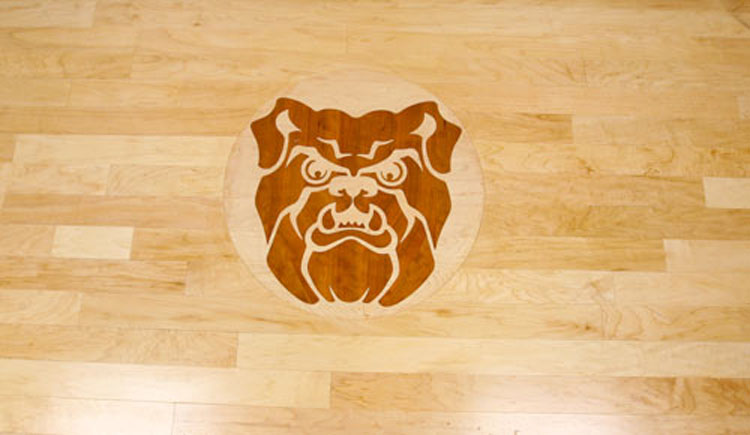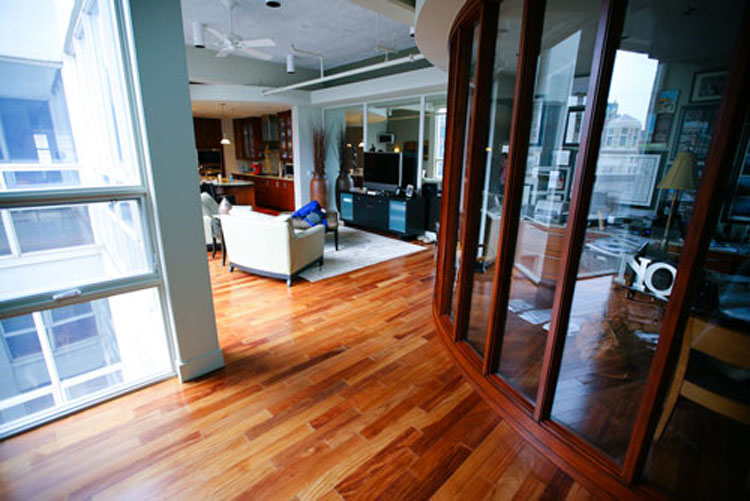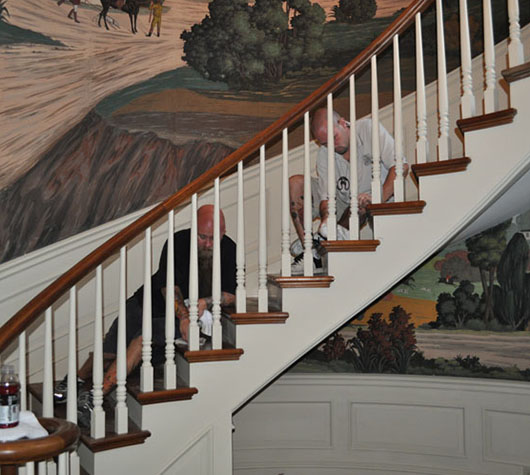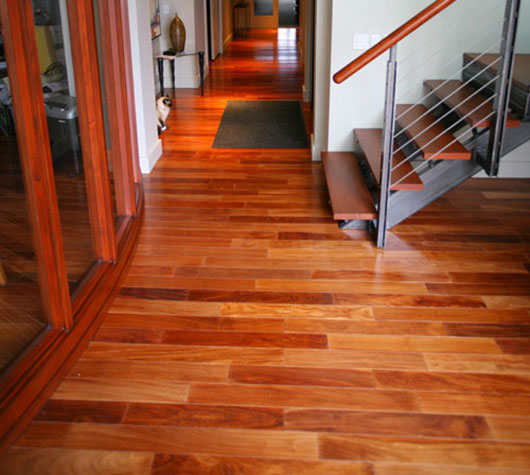White Oak Complements All Design Styles
White Oak’s light brown heartwood subtly contrasts with its blond–to-white sapwood, lending a breezy, clean feeling to any room. Many homeowners prefer this hardwood unstained, with only a clear coat to protect it from damage, but it also holds stain well and can be tinted a darker hue. The versatility of this popular and inexpensive hardwood complements any design style.
Even if you don’t have White Oak floors, you may have White Oak throughout your home. This wood has been a favorite among cabinetmakers and homebuilders for centuries, and it’s often used for trim, stairs and banisters. For generations, most bourbon distillers have been using White Oak casks to age their product, because of the hardwood’s malleability and durability. White Oak also contains microscopic tissues that are a natural wood sealant, keeping bourbon from seeping out of barrels. Those same properties make White Oak flooring resistant to water damage, which is why it’s a perfect hardwood for kitchens.
Here are some things you should know about White Oak flooring:
Name: White Oak’s scientific name is Quercus alba. The Quercus genus contains many species of oak found throughout the United States.
Origins: The White Oak grows primarily in eastern U.S., from New England to the Gulf Coast.
Janka Hardness Rating: With a Janka Hardness rating of 1360 out of 4000, the White Oak species is in the medium range of American hardwoods. The Janka Hardness scale is used to determine a hardwood’s resistance to dents, dings and scratches. The test, which uses a 2” x 2” x 6” piece of a wood specimen and a steel ball, determines how many pounds per square inch of force will make the steel ball embed halfway into the wood. That result leads to the wood’s Janka Hardness rating. Woods at the low end of the scale will show more evidence of dings compared to those at the top. However, woods at the very top of the Janka Hardness Scale could be too difficult to cut for home applications.
Installation: White Oak hardwood is water resistant, rot resistant and contains tannic acid, which repels insects. It’s generally easy to machine, takes screws and nails well and absorbs stain evenly. The White Oak grows at a slow to medium rate, and wood from slower-growing trees may be easier to machine.



 Repairing Scratched Hardwood Floors
Repairing Scratched Hardwood Floors
 Hinkle Fieldhouse Butler Univers...
Hinkle Fieldhouse Butler Univers...
 Penthouse Town Home Downtown Ind...
Penthouse Town Home Downtown Ind...
 Antique Flooring Restoration
Antique Flooring Restoration
 Brazilian Cherry Hardwood Floors
Brazilian Cherry Hardwood Floors







